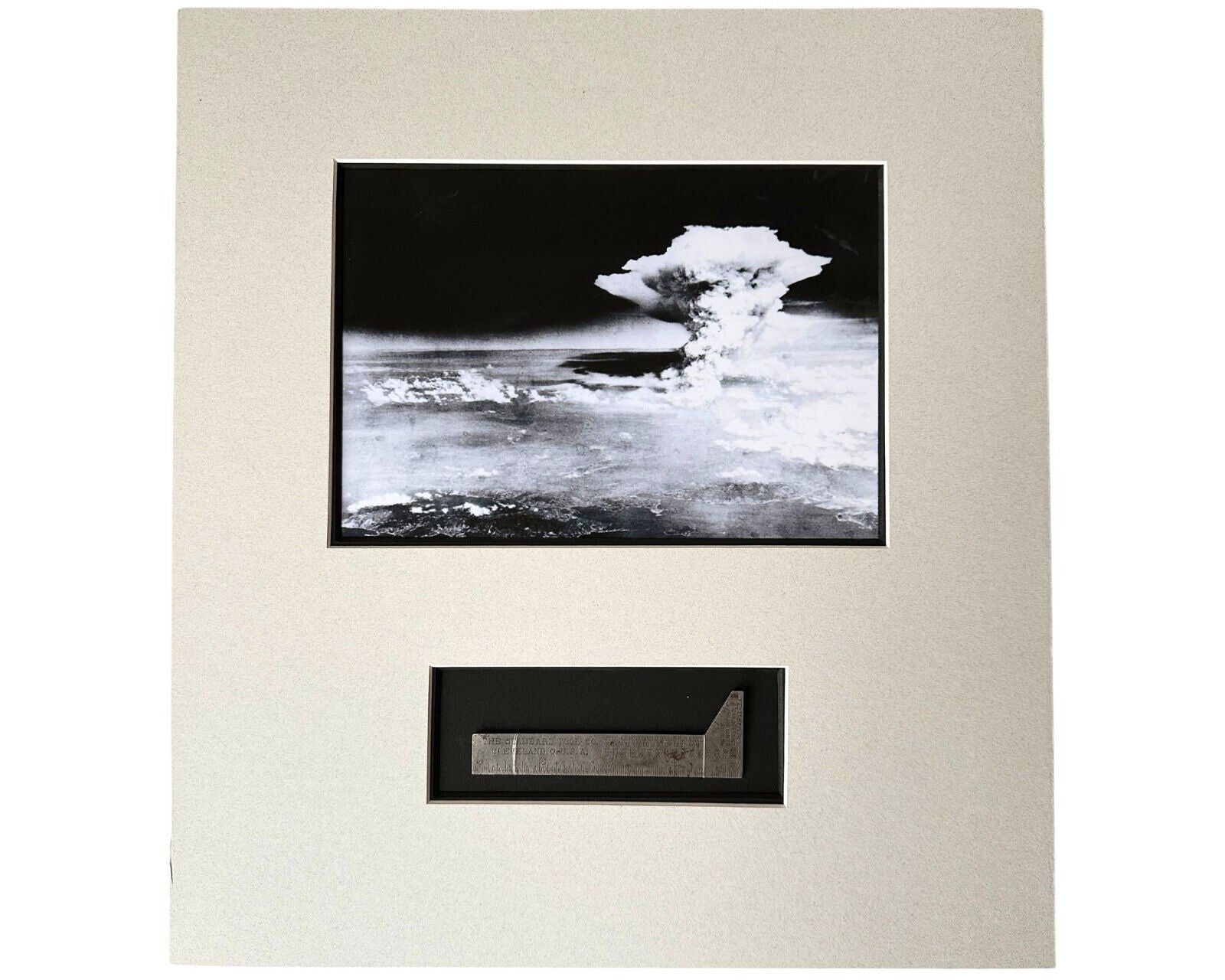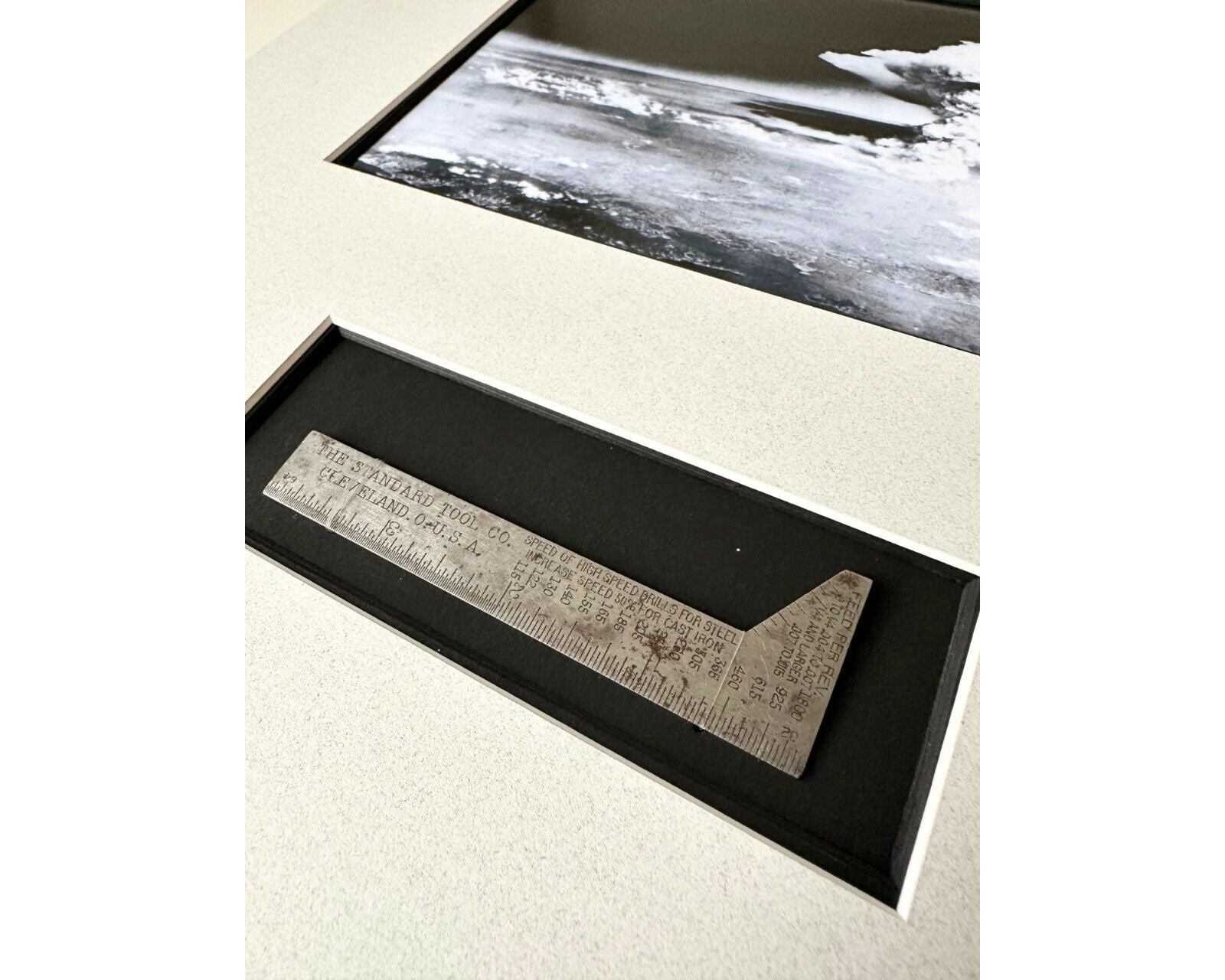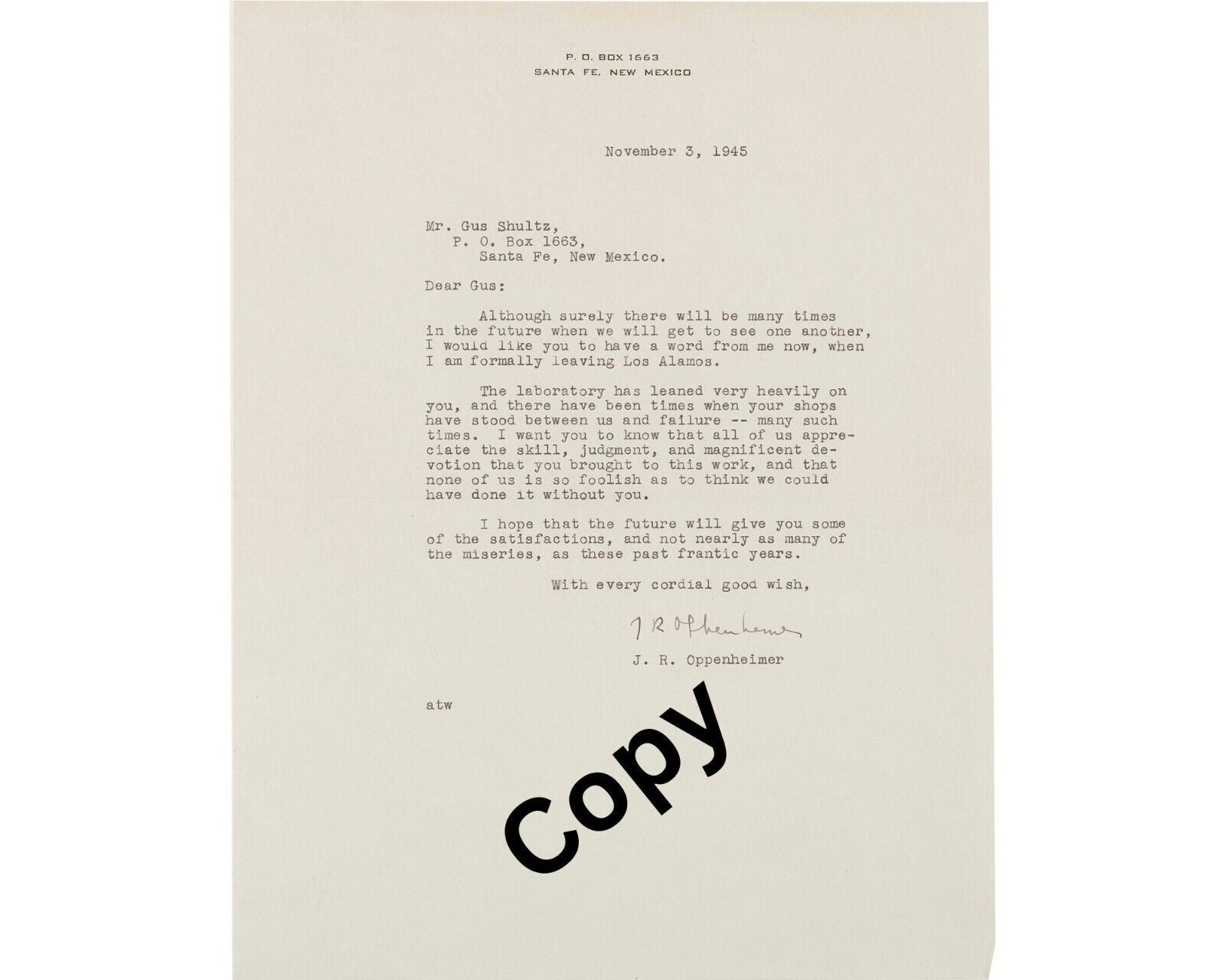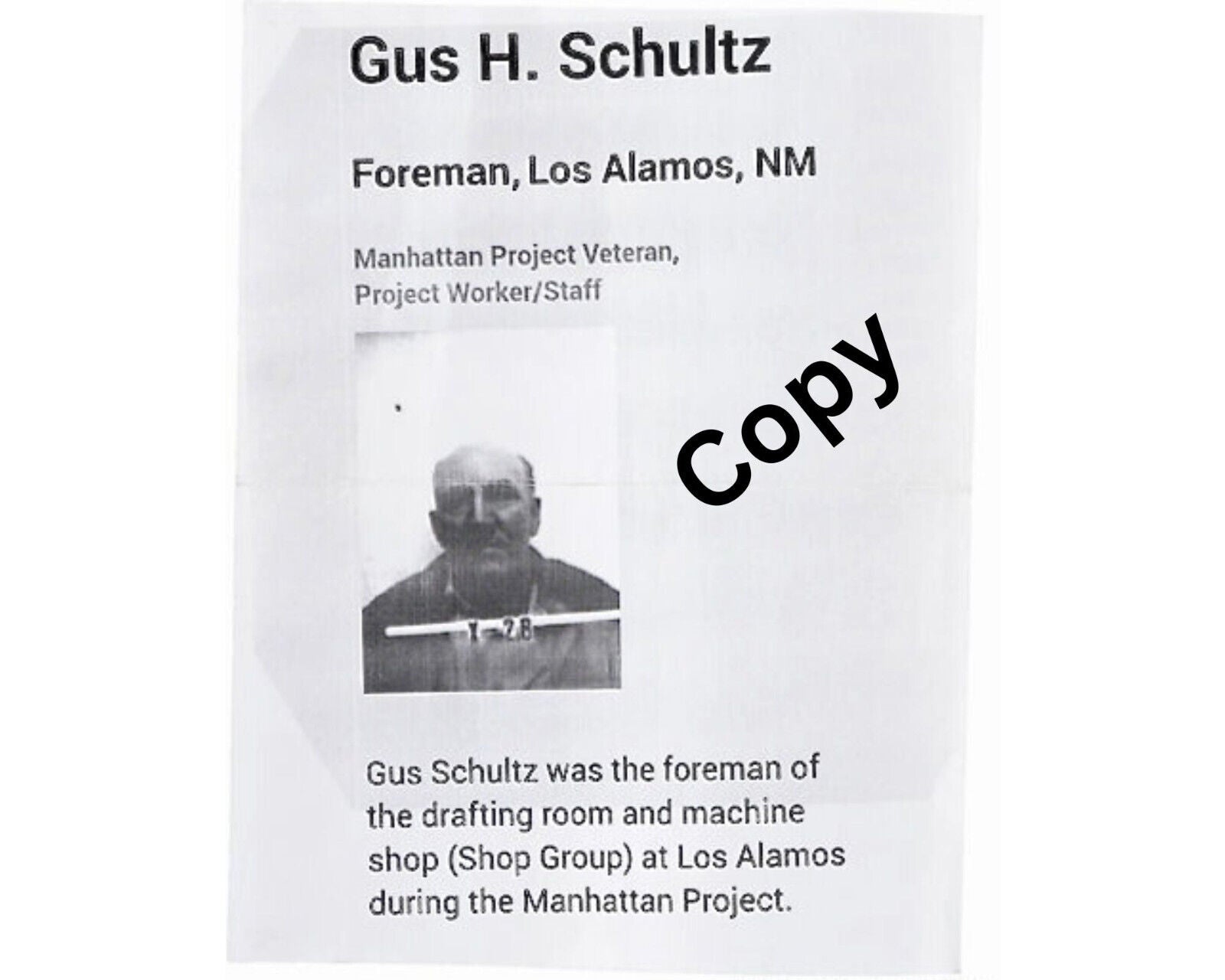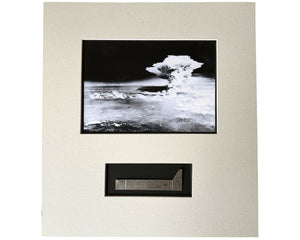Tool That Built the Atomic Bomb! Used by Oppenheimer's Foreman Manhattan Project
Tool That Built the Atomic Bomb! Used by Oppenheimer's Foreman Manhattan Project
Couldn't load pickup availability
Title:
Tool Used in Construction of the First Atomic Bomb – From Gus Schultz, Foreman at Los Alamos During the Manhattan Project
Description:
An extraordinary and unprecedented scientific relic from one of the most transformative efforts in human history—the Manhattan Project. This precision measuring scale, produced by The Standard Tool Co. of Cleveland, Ohio, was used circa 1943–1945 at Los Alamos, New Mexico, by Gus Schultz, the foreman of the drafting room and machine shop responsible for fabricating critical components of the first atomic bombs.
The scale is securely recessed in a museum-quality mat display alongside a haunting black-and-white photograph of the mushroom cloud produced by one of the nuclear detonations. The tool itself shows clear signs of use and age-appropriate patina—silent witness to the bomb’s creation.
Historical Context:
As foreman of the Los Alamos machine shop, Gus Schultz was a vital figure within the Manhattan Project’s inner operations. He oversaw the precision manufacturing of components for both uranium and plutonium bomb designs, including implosion mechanisms, explosive lenses, and containment vessels—parts that required absolute accuracy for the bomb’s functionality. His efforts were praised by J. Robert Oppenheimer, who wrote to Schultz:
"The laboratory has leaned very heavily on you, and there have been times when your shops have stood between us and failure—many such times... none of us is so foolish as to think we could have done it without you."
Los Alamos—code-named Project Y—was established in 1942 on New Mexico’s remote Pajarito Plateau, transforming quickly into a secret scientific enclave. Known colloquially as “The Hill,” it became home to top physicists and engineers under Oppenheimer’s leadership. Here, the atomic bomb evolved from theory into terrifying reality, culminating in the Trinity Test of July 16, 1945, followed by the bombings of Hiroshima and Nagasaki that brought World War II to an end.
Artifact Significance:
While Trinitite—the green glass formed by the Trinity blast—is often found at auction, actual tools used in the bomb's construction are virtually nonexistent on the private market. After reviewing extensive auction records, this offering appears to be the only known, documented example of such a tool used at Los Alamos during the war to surface publicly.
Importantly, a tool, but only a ruler, sold at University Archives in December 2024 for $2,000 including buyer’s premium, underscoring the market demand for Manhattan Project-era instrumentation.
Provenance & Documentation:
This tool comes directly from the collection of Gus Schultz and is accompanied by a detailed provenance packet that includes:
-
A copy of Oppenheimer’s original letter to Schultz
-
An additional letter from Oppenheimer referencing Schultz’s contributions
-
A diary entry by Schultz’s wife reflecting on the Hiroshima and Nagasaki bombings
-
A copy of Schultz’s Los Alamos ID card
Closing Appeal:
This is not merely a relic—it is a tangible piece of atomic history, physically connected to the scientific and moral inflection point of the 20th century. With impeccable provenance and deep historical weight, this is the only known Manhattan Project fabrication tool to reach the market with presidential-level attribution and supporting documentation. A powerful and singular acquisition for institutions, advanced collectors, or anyone drawn to the pivotal legacy of science and warfare.
Share
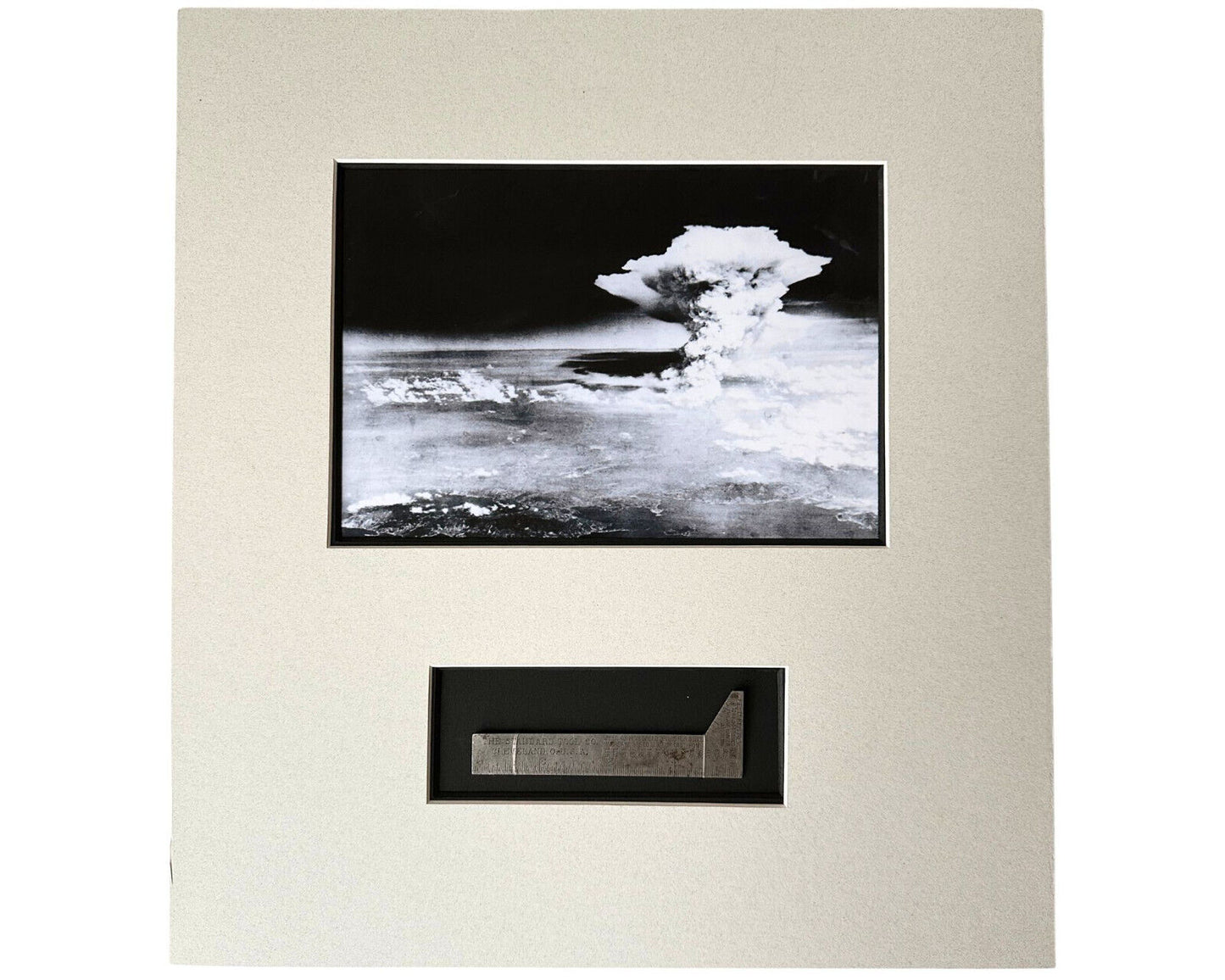
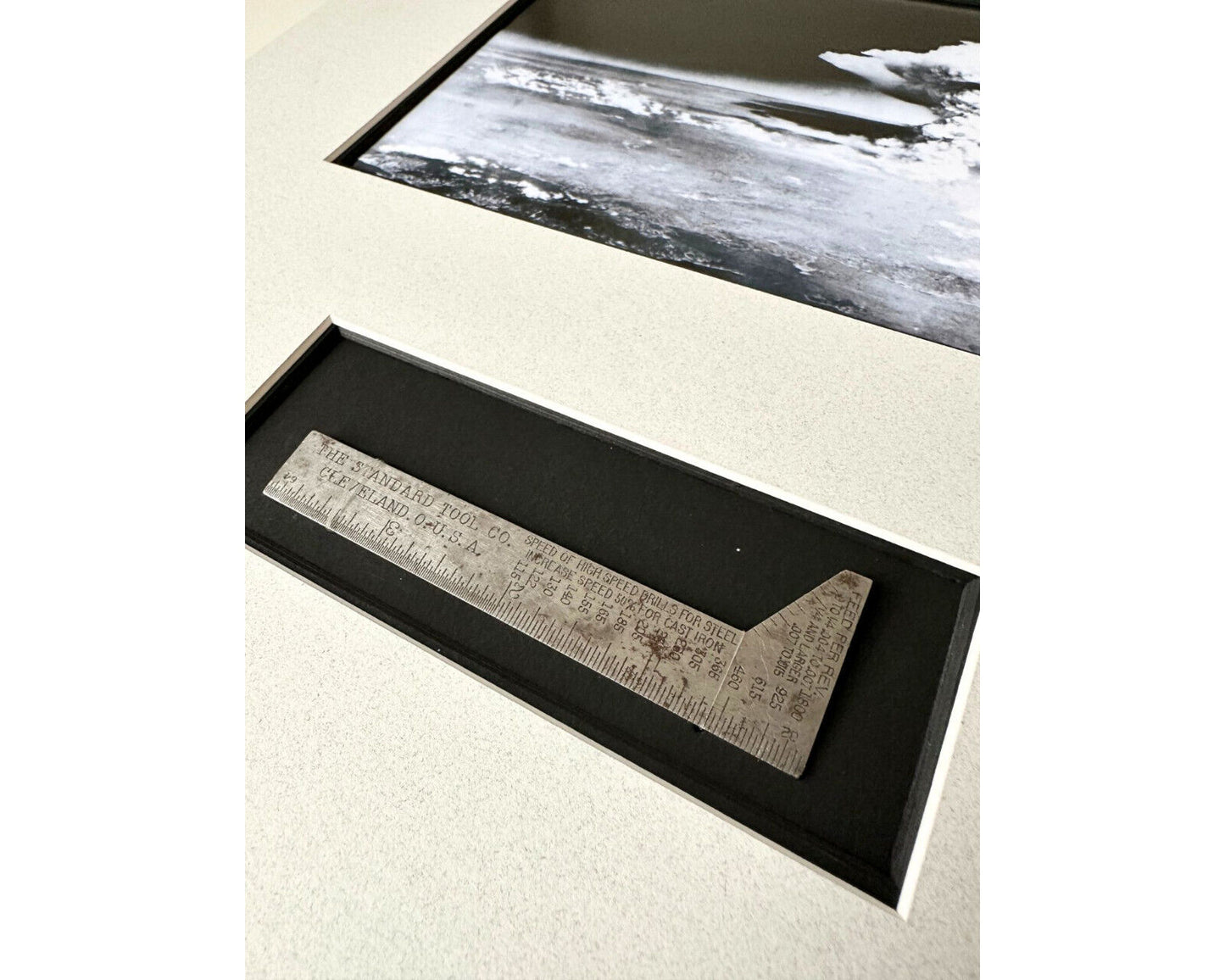
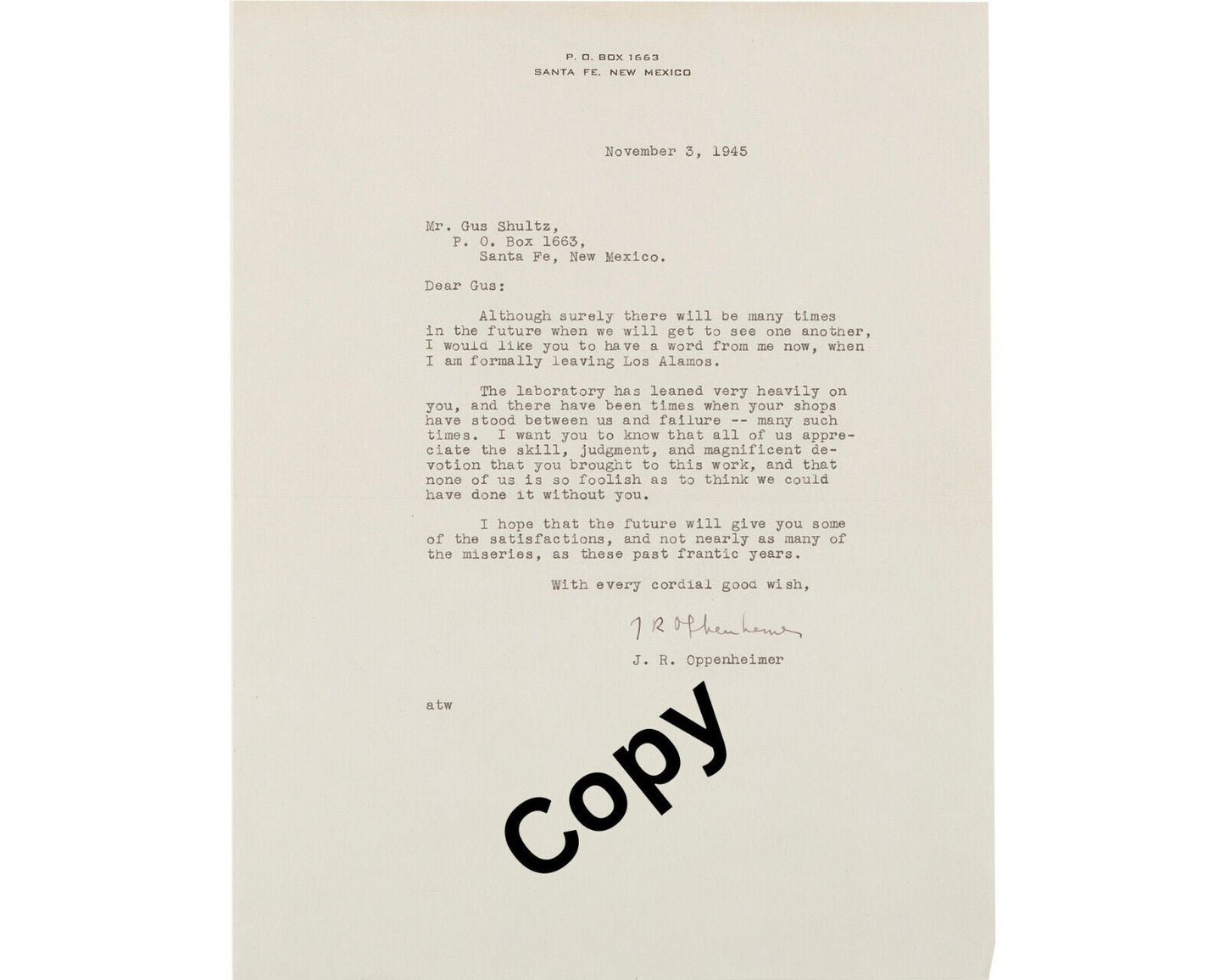
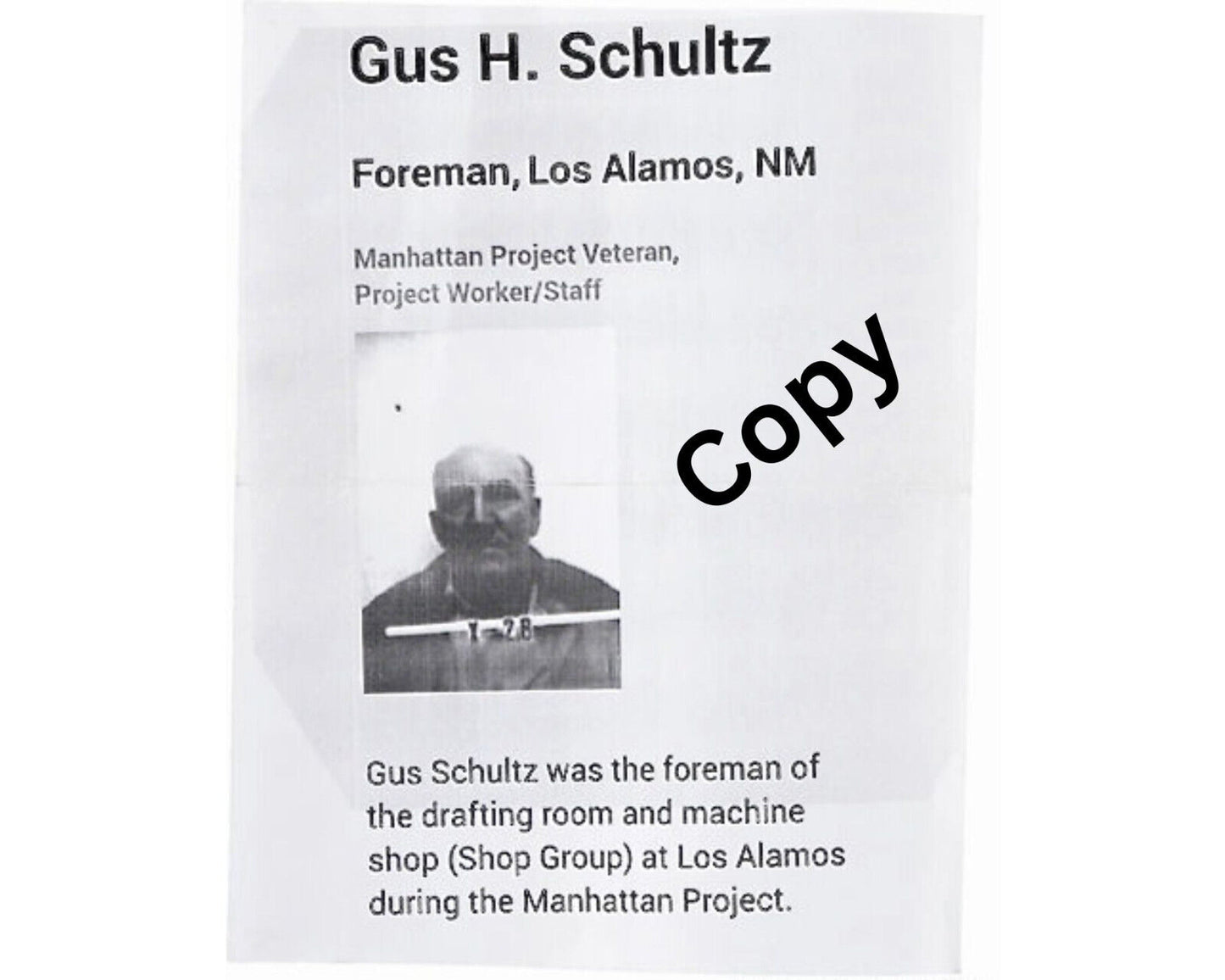

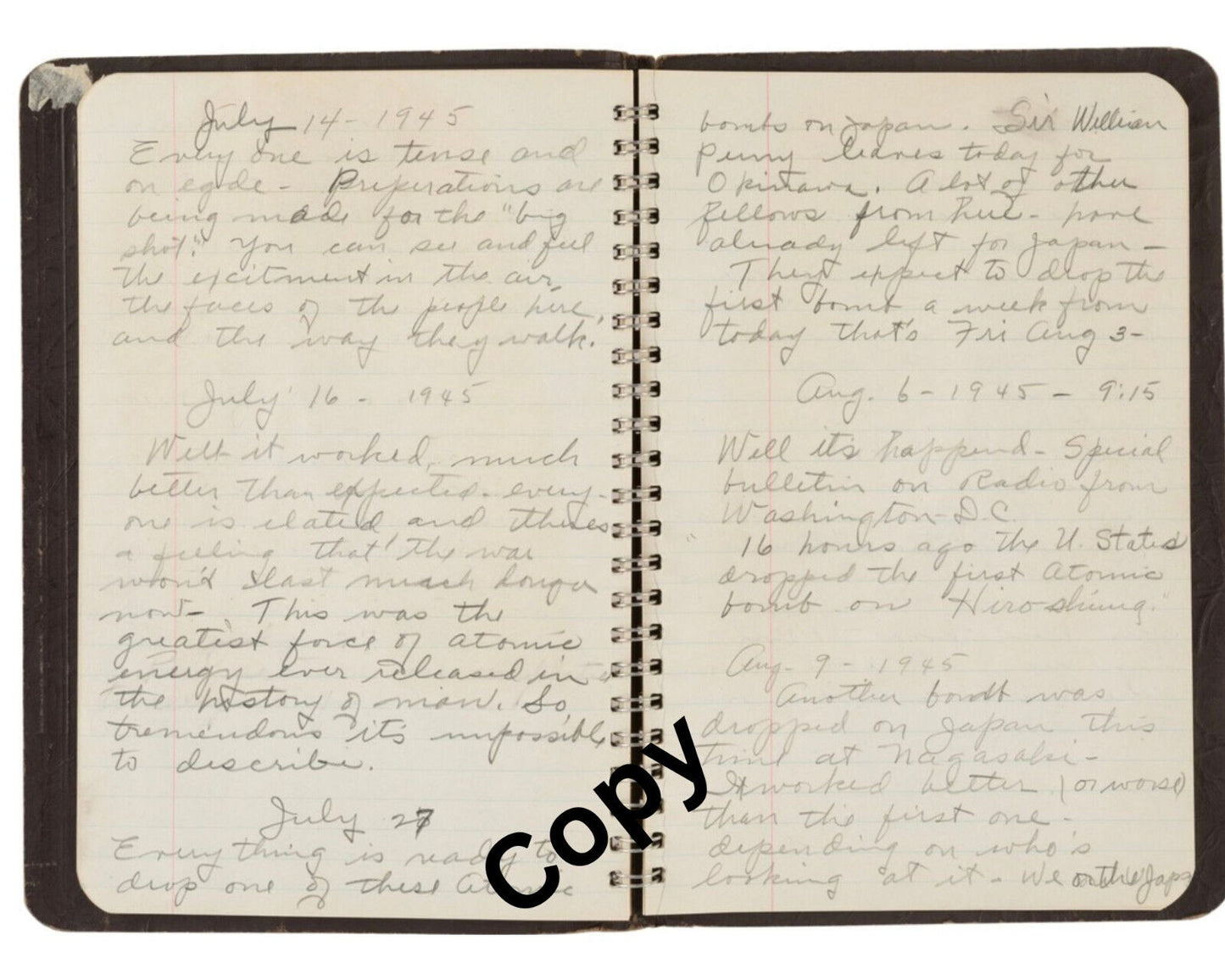
Join Our History Vault!
Be the first to discover rare artifacts, exclusive deals, and stories behind history’s greatest treasures.

